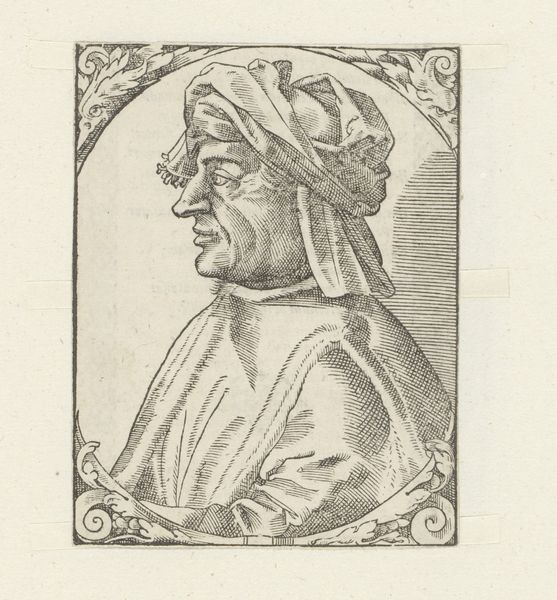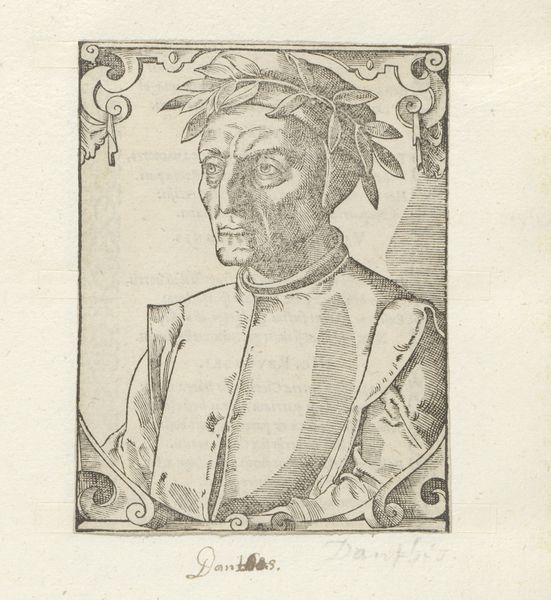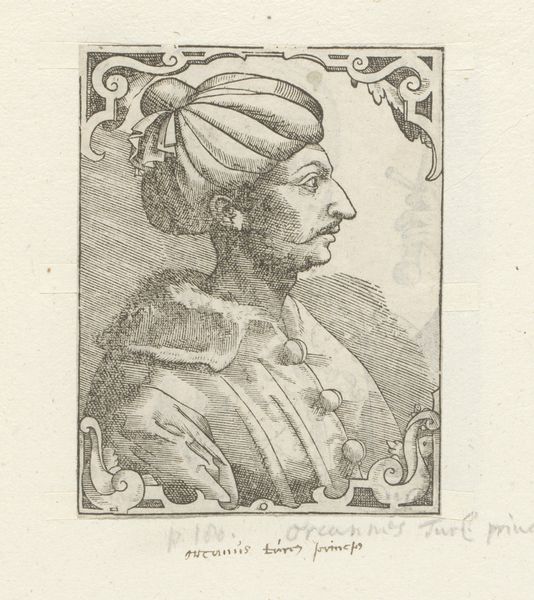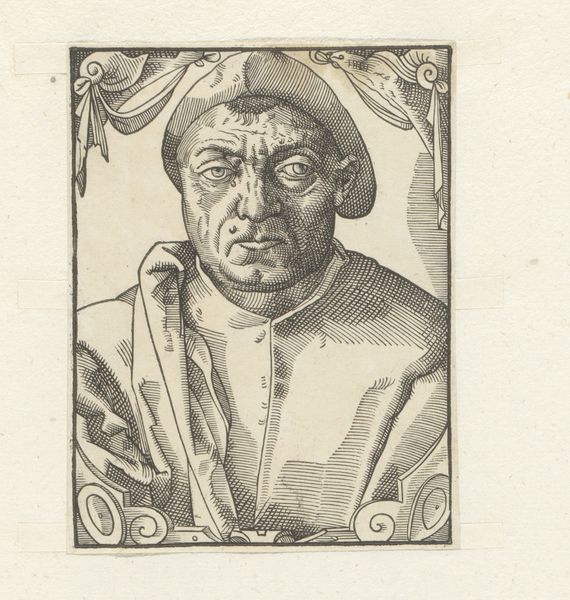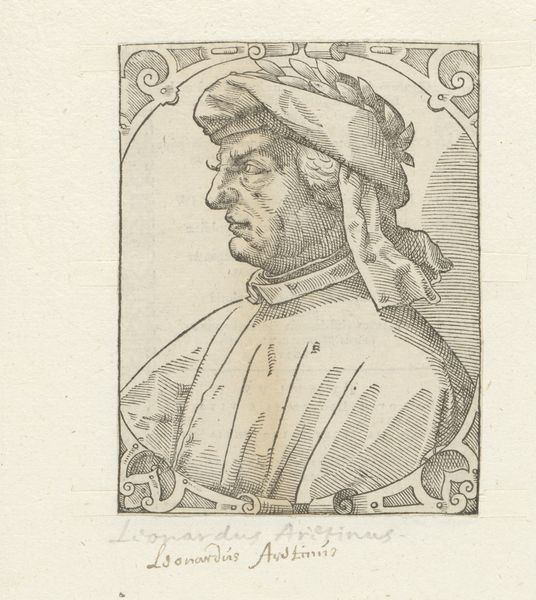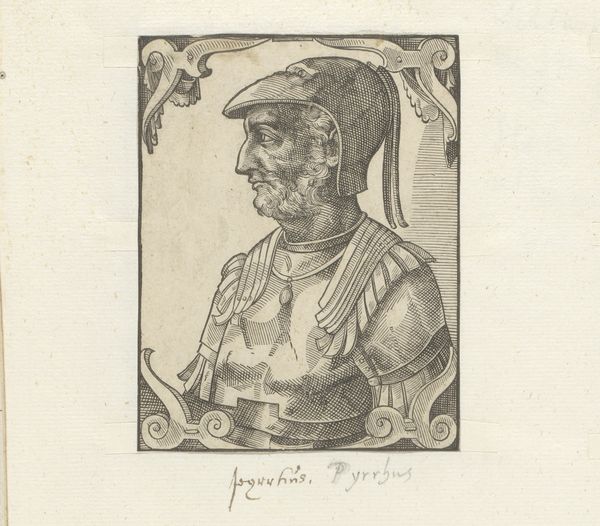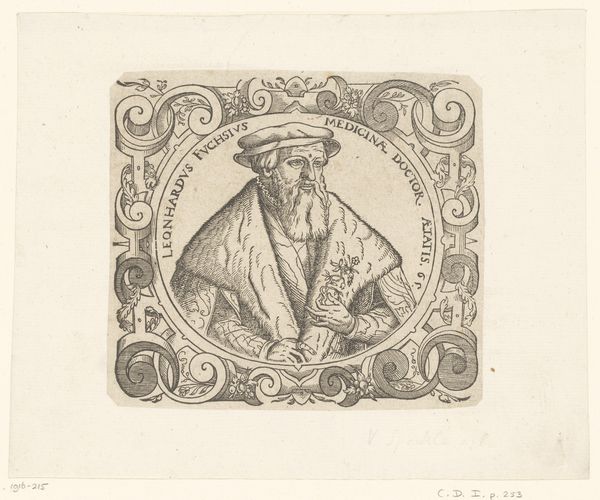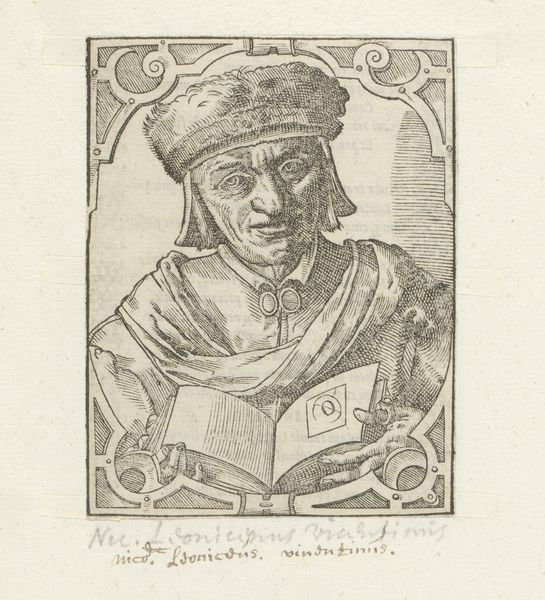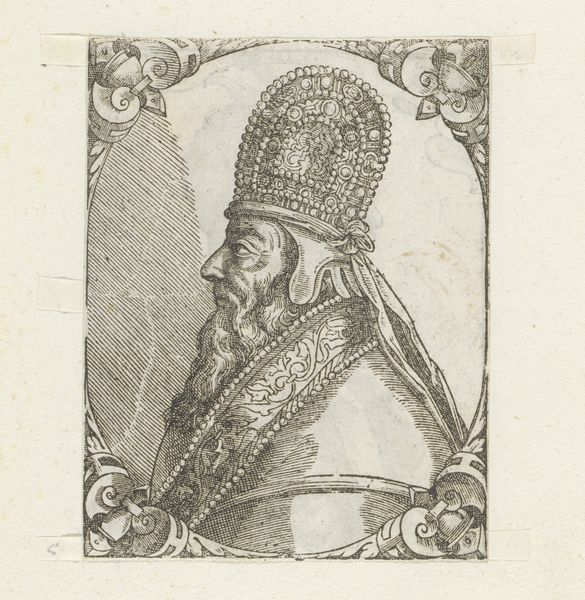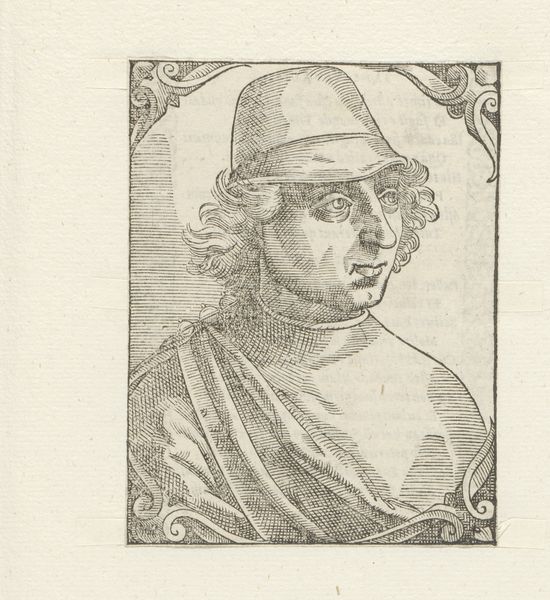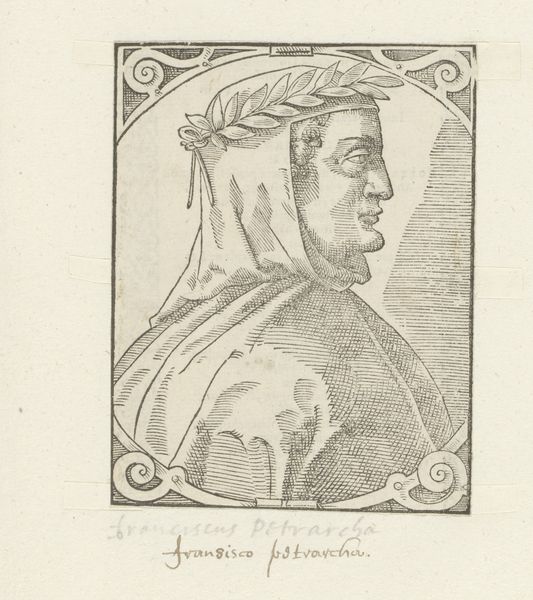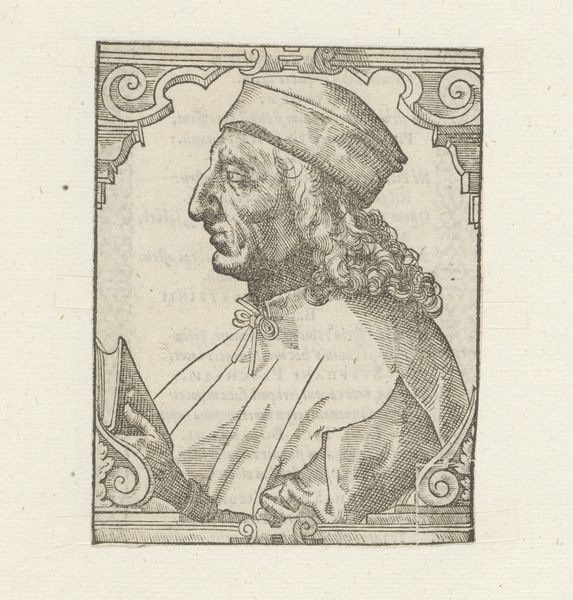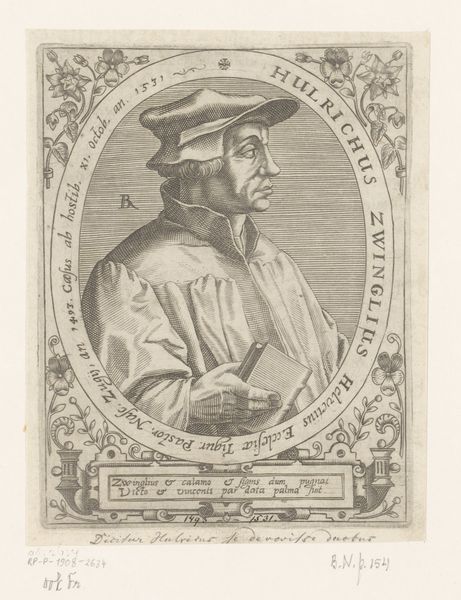
engraving
#
portrait
#
old engraving style
#
11_renaissance
#
italian-renaissance
#
engraving
Dimensions: height 108 mm, width 82 mm
Copyright: Rijks Museum: Open Domain
Editor: Here we have an engraving entitled "Portret van Bartolus van Sassoferrato" from somewhere between 1549 and 1577, by an unknown artist. It's quite striking how the subject's gaze avoids meeting ours. What can you tell me about this piece? Curator: This image offers a glimpse into the Renaissance's complex relationship with law and power. Bartolus was a celebrated legal scholar. How do you think this portrait functions within the context of its time? Editor: Well, I imagine it was meant to convey his authority and importance. The detail in the engraving must have been time-consuming and therefore expensive, so maybe only important people could afford to be portrayed. Curator: Precisely. It’s about the performative aspects of power and knowledge. But let’s also consider who gets remembered, and by whom. Why do you think his name and legacy have survived while the artist remains anonymous? Who held power then, and who holds power now, shaping the narratives we inherit? Editor: That's a good point. It feels like this image is less about the man himself, and more about the ideas and institutions he represents. It definitely feels a bit like propaganda now that you point it out, and leaves a bad taste in my mouth. Curator: Propaganda can be in the eye of the beholder, don’t you think? How we judge those power structures through a contemporary lens impacts how we react to Bartolus, and what we can learn about legal authority then and now. Editor: I see what you mean. Thanks for helping me look past the initial impression and consider the bigger picture. Curator: Of course. Considering historical contexts and power dynamics transforms how we perceive art, even simple portraiture.
Comments
No comments
Be the first to comment and join the conversation on the ultimate creative platform.
